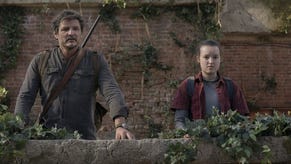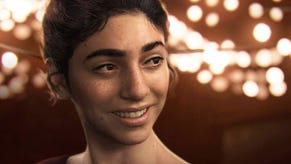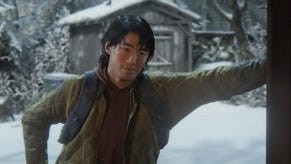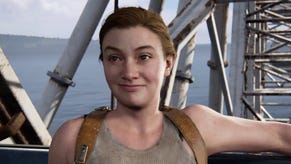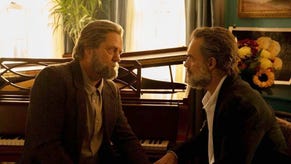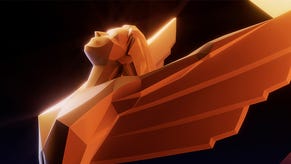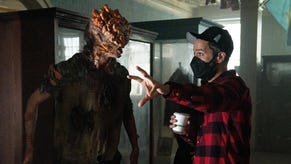The Naughty Dog difference
Evan Wells and Christophe Balestra on going darker, new methods of development and moving on to the next generation of hardware.
We've come a long way from goggle-eyed bandicoots. Naughty Dog's history - linked to the PlayStation brand since 1996 and tethered to it exclusively after Sony acquired the LA studio in 2001 - is in many ways the story of how video games have changed over fifteen years, and how their players have evolved and matured. We're no longer crashing through wooden boxes and collecting fruit; now we're engaging in character-driven stories that can be as affecting as they are entertaining.
"As gamers we're all getting older and having families," says Evan Wells, Naughty Dog co-president and an employee since the days of Crash Bandicoot. "And as far as the progression goes, there's definitely this more serious tone here."
From Crash through Jak and through to Uncharted, it's easy to draw a line through Naughty Dog's games that takes you further away from the cartoon wonderlands of the '90s and through the action fantasy of Uncharted. With The Last of Us, though, it's a line that lunges towards a darker, more gruesome vision that's barely hinted at within the matinee sheen of Nathan Drake's world.
"I don't think we're going to go darker and darker and darker, but we have really found something that really excites us as game developers," says Wells. "It's to really become so invested in the characters that you immerse yourself in the world."
It's perhaps the one constant in Naughty Dog's work since Crash Bandicoot, and it's a part of their games that has evolved as drastically as the technology. Nathan Drake's a distant cousin of Crash, with the anthropomorphism of old replaced by a mo-cap studio and a scriptwriter. They're enough to mask the fact that both are about, essentially, delving deeper into a jungle, and about the simple pleasures of traversal and combat - it's just that now the characters are placed in a more tangible world, and powered by more tangible motivations and emotions.
"Through Uncharted and The Last of Us we've developed these techniques with our actors and with our performance capture, and with our artists and animators to render these characters in a believable manner, and for the actors to come through in a way we can emote digitally. And then the way that the game designers, take that content and wrap it into gameplay that's interwoven - it's not these two separate ideas where there are two hands on top of each other."
It's where the Naughty Dog difference is felt - and it's where the studio's games really mark themselves out. "Some game developers pay lip service and say they're going to take story seriously, or hire a famous actor, but they aren't taking the steps necessary to really integrate it, or even giving the actors the opportunity to have their performance come through," says Wells. "We work with actors very closely, and they become part of the team. We work with them over 12 to 18 months, and they really get to know the characters and get to know the story, and they help to shape it and shift it."
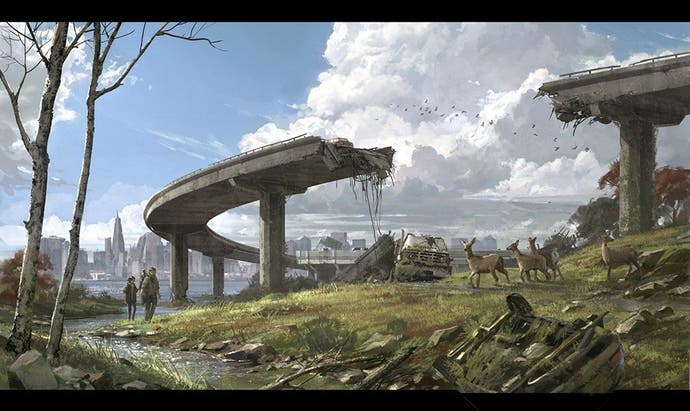
There's been a friction, though, between the story and gameplay in Naughty Dog's games, and there was some small consensus with Uncharted 3 that perhaps the needs of the script had a higher priority than the needs of the player. Wells, though, insists that there's a good balance in place. "The game designers know that sometimes story is going to trump gameplay, and sometimes our writers and our directors know that gameplay is going to trump story. We can concede in both directions. And that's the attitude we apply to it. Hopefully the results speak for themselves."
With The Last of Us, there's a sense of a reaction to some of that criticism. More than any other product in the studio's past, this is a game that's surprisingly deep with systems, with weapon crafting and an open-ended combat that mixes stealth and gunplay, all of which is smeared with a violence that's now in keeping with a more gruesome tone.
Naughty Dog, perhaps unsurprisingly, is reluctant to make any associations. "I don't think we're really comparing The Last of Us with any of our previous games," says co-president Christophe Balestra. "We've gone really mature, and really we just wanted to see two characters bond. How can they get through this journey, and this world, which isn't an easy world. How them being so different in the beginning - how can they learn from each other? That was really our main focus in the beginning. It's in those moments, those situations where you will be forced to make tough decisions. That's what we wanted to put them through."

It's tempting to think of the two teams that are now within Naughty Dog as having two identities - it's not unfeasible, of course, that the other team is working on an Uncharted for the next generation of PlayStation, and retaining the lighter tone of that series - but Balestra insists that isn't the case. "We do something very spatial at the office," he explains. "We didn't want to have a team A and a team B, so all the designers sit together, no matter what project they're working on. So it's all inter-mingled - the programmers the same thing, the animators and the environment artists also.
"It's very important that these people still feel like they're part of Naughty Dog, and we don't want two different ways of making games. We like the way that we make games. That's our approach, and it's working pretty well so far. I know it's not something that people really do, but we're learning the process of becoming two teams as we're going, and Evan and I are always thinking about it. We're good with two teams. It was a big decision, and a big step. We're good with that - and we're going to stay like that for a very long time."
Naughty Dog suggests that it's going to be sticking with two teams as it heads into the next generation of hardware as well, despite the assumption that developing games for the PlayStation 3's successor is going to require larger teams. "It's true - moving on to something else after PS3 might mean more people, but we're not sure just yet," says Balestra. "It's about the quality of the tools, and about whether you can make something smarter. My guess is that they will expand - you'll have more this, and more that - you'll always have something more. In terms of our art, we always create our assets at a higher resolution than what you see in-game. A lot of our pipelines are already ready to move to something superior to the PS3. But it's scary."
Scary it may be, but although Naughty Dog's being understandably coy about the next PlayStation, it's confident that it's prepared for a smooth transition. "We had a pretty bad experience when we moved from PS2 to PS3, because we made some stupid mistakes," says Balestra. "And that was totally our fault. And also we were going from PS2 to PS3, the shaders were different and things like that, and we had a lot to learn. I think we've caught up though - I think our games look pretty good, so I feel like we're fine right now. But it's always scary, because you don't know what to expect just to do something. We'll see. We have a little more time to think about it."
"The days of starting from scratch are gone," believes Wells. "We did start from scratch going from PS2 to PS3, and that's down to the fact that on PS2 we'd written our own programming language. Everything on Jak and Daxter was written in a language called GOOL - game object oriented list. Andy Gavin the founder of Naughty Dog, was an MIT guy, and this was his thing. It was great, a great development environment that was geared to the kind of game that we made. Moving on to PS3 we are entering this group of developers that we could share technology with. We wanted to get into the more traditional development environment that other studios are developing with, so we did have to start from scratch. It was a tough road to hoe."
There's only days to go until the next PlayStation's unveiled, and it's clear that Naughty Dog's going to carry on playing a big part in Sony's future in video games. It's a relationship that's not set to falter any time soon. "SCEA's a great environment to work in, and they acquired us in 2000, and they've never tried to change the way we work," says Wells. "I guarantee you that if we tried to fit our style, to make a game in the way that other studios were required to by their publisher, we'd fail, absolutely. Likewise, if someone tried to adopt our techniques, they wouldn't be able to do it either."
"Quality comes at a price, and I'm not talking about money. It's about making sacrifices," agrees Balestra. "Our philosophy is, well... it's going to suck, and just deal with it. It's hard to make games, it's all about iteration and nothing is easy. Every detail is going to require lots of effort from different people. We don't want to create a process at Naughty Dog - we want people to have as much freedom as they can. But you will make mistakes, you will have to iterate, but you're going to have to fail again and again and again."
Wells, one of the longest serving members of staff at Naughty Dog, and now its most senior, is living proof of that philosophy. Weary from having prepared code until 3am the previous morning, he leaves our brief interview to make his way back to the studio where he'll single-handedly capture screenshots for The Last of Us's latest round of press. They're the kind of long days required in building a game on the scale of The Last of Us, and there's plenty more ahead for the team in the run-up to its June release. "We have our own culture," Wells says as he's ushered out to a taxi. "This is how we make games, for better or worse. There's no magic, it's just hard work."



